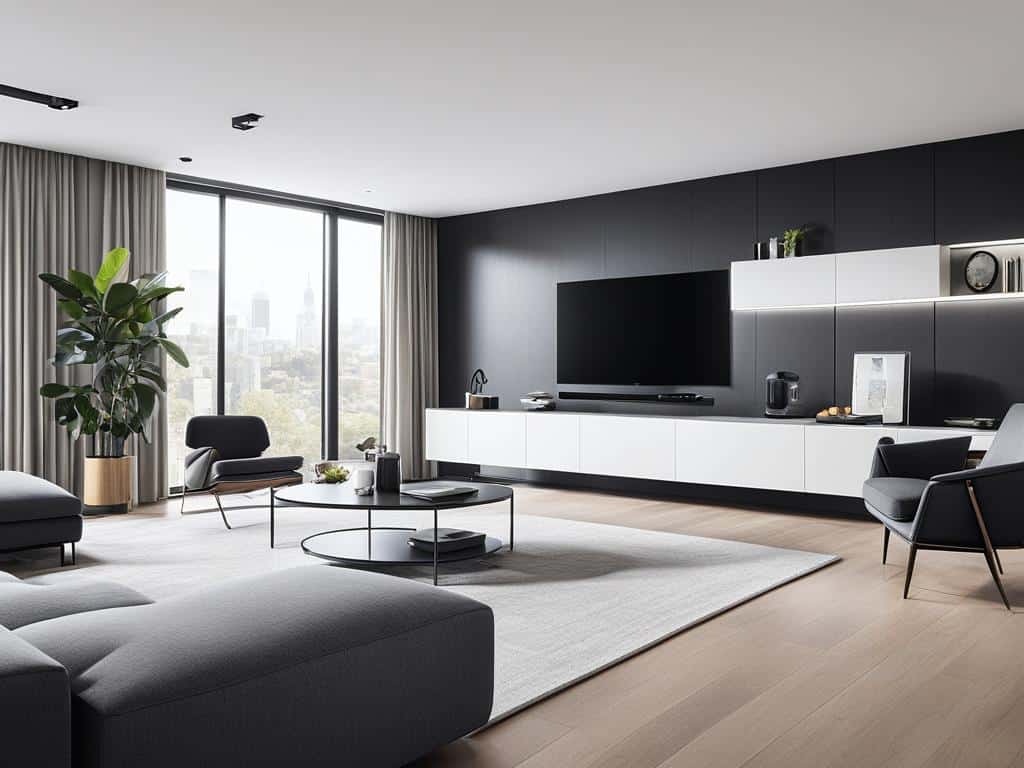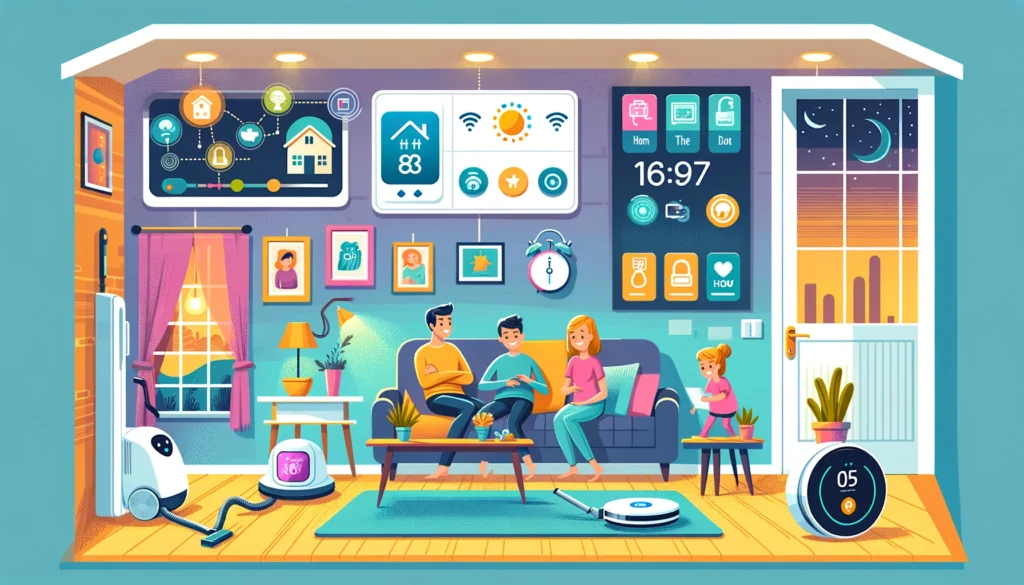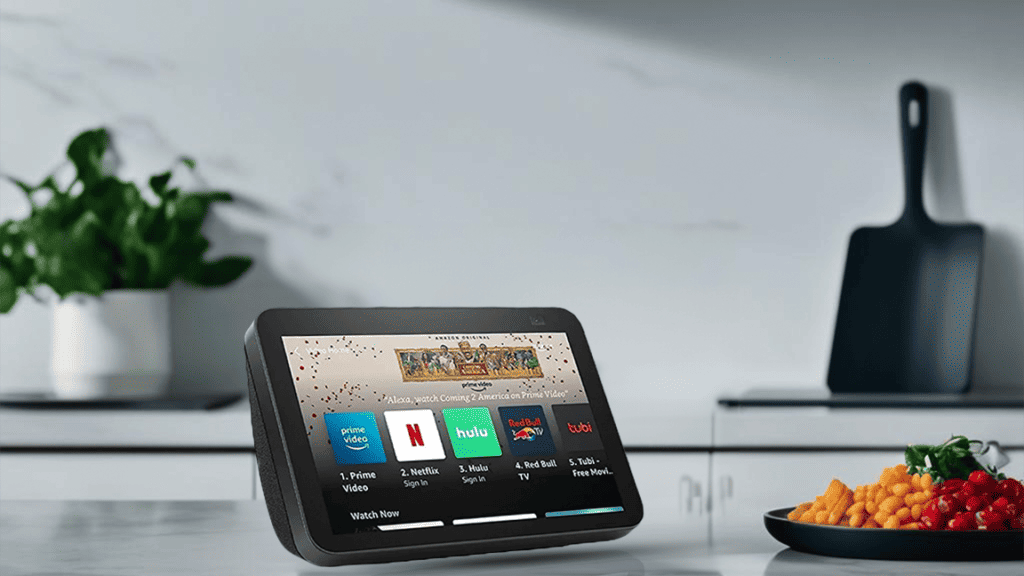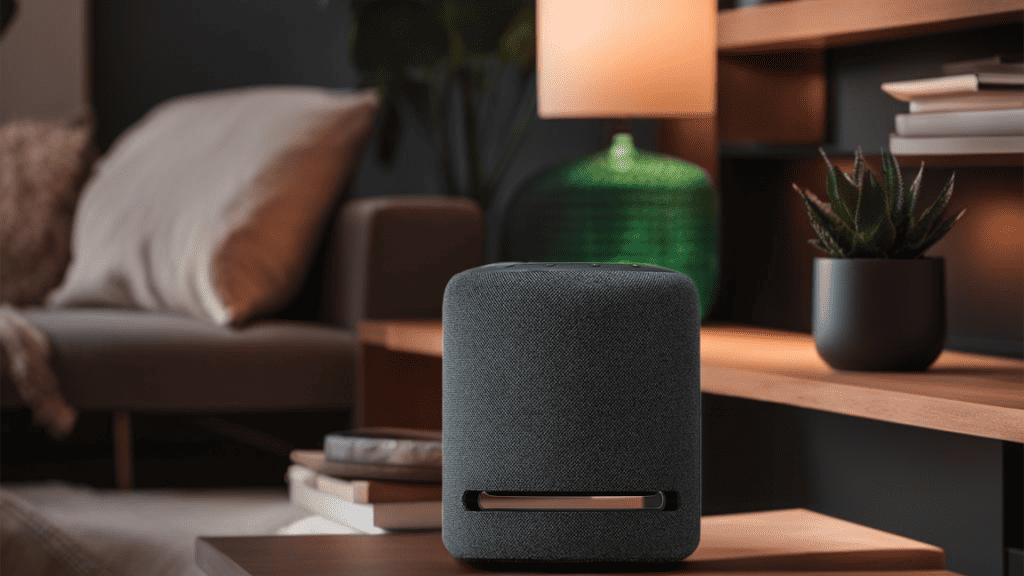Hey there! Some of the links in this post are affiliate links. This means we may earn a commission if you click on them and make a purchase. This helps support our blog at no additional cost to you-Learn more here.
Home automation is the automatic control of electronic devices in your home through online connectivity. It allows devices to be controlled remotely, either through a mobile app or a voice assistant. With home automation, you can schedule tasks for your devices, monitor them remotely, and even have them trigger each other to create a seamless smart home experience. This technology makes life more convenient, efficient, and secure.


With cloud computing in place, home automation systems offer a more streamlined and flexible approach to managing your smart home. Whether it’s adjusting the thermostat before you arrive, turning on the lights remotely, or receiving security alerts, cloud-based home automation empowers homeowners with enhanced control and convenience.
 Through cloud computing, the possibilities for home automation are virtually endless. The ability to store and access data remotely, combined with the scalability and affordability offered by the cloud, opens up new opportunities for creating intelligent and interconnected homes. Embrace the power of cloud computing in home automation and transform your living space into a smart, efficient, and connected ecosystem.
Through cloud computing, the possibilities for home automation are virtually endless. The ability to store and access data remotely, combined with the scalability and affordability offered by the cloud, opens up new opportunities for creating intelligent and interconnected homes. Embrace the power of cloud computing in home automation and transform your living space into a smart, efficient, and connected ecosystem.




These are just a few examples of the common features and devices you can incorporate into your home automation system. With the right combination, you can create a smart home that caters to your unique needs and preferences.
With these trends on the horizon, the future of home automation looks promising. It brings us closer to a more connected, intelligent, and efficient living environment.
Key Takeaways:
- Home automation simplifies the control of devices in your home through online connectivity.
- You can schedule tasks, monitor devices remotely, and create a seamless smart home experience.
- Home automation offers convenience, efficiency, and enhanced security.
- With the ability to remotely access and automate tasks, home automation makes life easier.
- Enjoy the benefits of a more connected and automated home with home automation.
Understanding the Benefits of Home Automation
Home automation offers numerous benefits to homeowners. Some of the key advantages include:- Convenience: With home automation, you can control and manage your devices from anywhere using your smartphone or voice assistant. Whether you want to turn on the lights, adjust the temperature, or lock the doors, it can all be done with a simple command or tap.
- Energy Efficiency: Home automation allows you to optimize energy consumption in your home. You can schedule lights to turn off automatically when not in use, adjust the thermostat to conserve energy while you’re away, and receive energy usage reports to make informed decisions about your energy consumption.
- Security: An integrated home automation system provides enhanced security and peace of mind. You can monitor your home through security cameras, receive alerts for unusual activity, and remotely control your security system to ensure the safety of your loved ones and belongings.
- Comfort: With home automation, you can create personalized settings to suit your preferences and lifestyle. Adjust the lighting and temperature to create the perfect ambiance, set your favorite music playlist to play when you enter a room, and even automate daily routines to make life more convenient and enjoyable.
- Accessibility: Home automation makes it easier for individuals with mobility challenges or disabilities to control their environment. By integrating voice control and accessible technology, tasks such as opening doors, adjusting blinds, and operating appliances can be managed with simple voice commands or through a mobile app.
- Peace of Mind: With home automation, you can have peace of mind knowing that you have control and visibility over your home, even when you’re away. Receive alerts for potential security breaches, monitor your home’s status in real-time, and remotely manage devices to ensure everything is running smoothly.

How Does Home Automation Work?
Home automation systems rely on a network of interconnected devices that operate via the internet. These devices include sensors, controllers, and actuators that work together to perform automated tasks, making your home smarter and more efficient. Sensors play a crucial role in home automation by detecting changes in motion, temperature, light, and other environmental factors. They collect data and send signals to the controllers, which can be smartphones or voice assistants. The controllers then interpret the signals and send instructions to the appropriate devices for action. Actuators are responsible for physically changing the state of devices based on the commands received from the controllers. They can be in the form of smart switches, motorized valves, or any other device that can perform mechanical actions. The actuators enable tasks such as turning lights on and off, adjusting room temperature, opening and closing doors, and controlling appliances.Components of a Home Automation System
A typical home automation system consists of the following components:- Sensors: These devices detect changes in the environment, such as motion sensors, temperature sensors, and light sensors.
- Controllers: Commonly smartphones or voice assistants, controllers receive and interpret signals from sensors, allowing users to interact with the system.
- Actuators: These devices physically control the devices in your home, based on the instructions received from the controllers.
- Hub: The hub serves as the central control unit of the home automation system. It connects all the devices and facilitates communication between them.
- Network: A stable and secure network connection, usually Wi-Fi, is essential for the seamless operation of a home automation system.
| Advantages of Home Automation | Considerations of Home Automation |
|---|---|
|
|
Understanding the Internet of Things (IoT) and Home Automation
The Internet of Things (IoT) encompasses devices that connect to the internet and communicate with each other. In the context of home automation, IoT devices form the foundation of a connected and automated home. These devices, such as smart light bulbs, thermostats, and security cameras, can be integrated into a home automation system to enhance control and convenience. By leveraging the automation capabilities of home automation, IoT devices work together harmoniously to create a seamless and convenient living experience. With IoT devices in your home, you can regulate lighting, adjust temperatures, and enhance security with just a few taps or voice commands.This post contains affiliate links.
With home automation as a subset of IoT, the possibilities for creating a smart and interconnected home are endless. The integration of IoT devices into home automation systems empowers homeowners to enjoy the benefits of a more efficient, convenient, and secure living environment.

The Benefits of IoT Devices in Home Automation:
- Convenience: IoT devices enable effortless control of various aspects of your home, allowing you to automate tasks and routines.
- Efficiency: By optimizing energy usage and streamlining processes, IoT devices contribute to increased efficiency in your home.
- Security: With advanced monitoring and alert systems, IoT devices enhance the security of your home, providing peace of mind.
- Customization: IoT devices offer a wide range of customizable features, allowing you to tailor your home automation system to your preferences and needs.
Components of a Home Automation System
A home automation system consists of several components that work together to create a smart and interconnected living space. These components include:- Hub or Controller: The central command center of the home automation system, responsible for connecting and controlling all devices.
- Sensors: Devices that detect and measure various conditions, such as motion, temperature, light, and humidity, to trigger automated actions.
- Actuators: Components that physically manipulate devices, such as switches, valves, or motorized systems, based on the commands from the controller.
- Smart Devices: These devices are equipped with connectivity and automation capabilities, allowing users to control and monitor them remotely. Examples include smart lights, thermostats, locks, cameras, and appliances.

Philips Hue Smart Light Starter Kit | Control with App or Voice Assistant
- Includes one Hue bridge, one smart button, and three White Ambiance smart 75W-equivalent A19 warm-to-cool white light bulbs; Perfect for general lighting anywhere in your home
- Choose from shades of warm-to-cool white light to enhance your room décor and ambiance; cool white light to focus or energize, warm white light to relax.
- Convenient smart control; Set up voice control in the Hue app and use simple voice commands to control your lights with Alexa or Google Assistant
This post contains affiliate links.
- Network Infrastructure: The network infrastructure, such as Wi-Fi, Ethernet, or a combination of wired and wireless connections, enables communication between the hub, sensors, actuators, and smart devices.
- Integration Tools: Software or applications that facilitate the integration of different devices and systems, ensuring seamless communication and interoperability.
- User Interface: The interface through which users interact with the home automation system, which can be a mobile app, a web portal, or voice commands through a smart speaker.
This post contains affiliate links.
The combination of these components forms the foundation of a robust and efficient home automation system. With these interconnected devices, homeowners can experience enhanced control, convenience, and energy efficiency.
Comparison of Home Automation Components
| Component | Description | Examples |
|---|---|---|
| Hub or Controller | The central command center that connects and controls all devices in the home automation system. | SmartThings Hub, Wink Hub, Amazon Echo |
| Sensors | Devices that detect and measure various conditions to trigger automated actions. | Motion sensors, temperature sensors, humidity sensors |
| Actuators | Components that physically manipulate devices based on the commands from the controller. | Smart switches, motorized curtains, motorized valves |
| Smart Devices | Devices equipped with connectivity and automation capabilities for remote control and monitoring. | Smart lights, thermostats, locks, cameras, appliances |
| Network Infrastructure | The network that enables communication between the hub, sensors, actuators, and smart devices. | Wi-Fi, Ethernet, Zigbee, Z-Wave |
| Integration Tools | Software or applications that facilitate the integration of different devices and systems. | IFTTT, SmartThings, Home Assistant |
| User Interface | The interface through which users interact with the home automation system. | Mobile app, web portal, voice commands |
Control Protocols in Home Automation
Home automation devices rely on different control protocols to connect to the internet and communicate with each other. These control protocols enable seamless integration and interoperability between various smart devices in your home. Some of the common control protocols used in home automation include:1. WiFi
WiFi, short for Wireless Fidelity, is a widely adopted control protocol in home automation. It enables devices to connect to a local network and access the internet wirelessly. With WiFi-enabled devices, you can control and monitor your home automation system using smartphone apps or voice assistants.2. Z-Wave
Z-Wave is a wireless control protocol specifically designed for home automation. It operates on a low-power radio frequency, allowing devices to communicate with each other over longer distances. Z-Wave offers a robust and reliable network for controlling various smart devices, such as lighting systems, thermostats, and security sensors.3. ZigBee
ZigBee is another wireless control protocol commonly used in home automation. Like Z-Wave, ZigBee operates on a low-power radio frequency, facilitating communication between devices. ZigBee is known for its energy-efficient capabilities and is often used in smart lighting systems, smart locks, and home security applications.4. Bluetooth
Bluetooth is a short-range wireless control protocol that is widely used in home automation for connecting devices in close proximity. It allows for seamless communication between devices, such as smartphones, tablets, speakers, and smart appliances. Bluetooth-enabled devices can be easily controlled and automated through dedicated apps or voice commands. In home automation, the choice of control protocol depends on factors such as device compatibility, range requirements, power consumption, and personal preferences. It’s essential to ensure that the control protocols used in your home automation system are compatible with the devices you intend to connect and automate.| Control Protocol | Key Features |
|---|---|
| WiFi | Wireless internet connectivity, high-speed communication, wide device compatibility |
| Z-Wave | Low-power consumption, long-range communication, reliable network, interoperability |
| ZigBee | Energy-efficient, mesh network topology, easy integration with smart lighting systems |
| Bluetooth | Short-range communication, easy setup, wide device compatibility, ideal for personal area networks |
Cloud Computing and Home Automation
Cloud computing plays a significant role in home automation systems, revolutionizing the way we control and manage our smart homes. Rather than relying on dedicated IP addresses or high-end computers, many home automation systems leverage the power of cloud servers for storing data and enabling remote access. This integration of cloud computing in home automation brings numerous benefits, enhancing the overall functionality and convenience of the system. One of the key benefits of cloud computing in home automation is scalability. By leveraging the cloud, home automation systems can easily accommodate an expanding network of devices and sensors. Whether you’re adding new smart devices or integrating different brands into your system, the cloud allows for seamless scalability without the need for complex hardware upgrades. Accessibility is another advantage of incorporating cloud computing into home automation. With cloud-based storage and control, users can access their devices and manage their homes remotely from anywhere in the world. Whether you’re at work, on vacation, or simply away from home, you have complete control over your smart home through a mobile app or web interface. Furthermore, cloud computing brings affordability to home automation. Traditionally, setting up a home automation system required expensive hardware and infrastructure. With cloud-based solutions, the cost of entry is significantly reduced as homeowners no longer need to invest in dedicated servers or costly on-premises equipment. This affordability makes home automation more accessible to a wider range of households. Take a look at the table below to understand the benefits of cloud computing in home automation at a glance:| Benefits of Cloud Computing in Home Automation | ||
|---|---|---|
| Scalability | Accessibility | Affordability |
| Enables easy expansion of devices and sensors | Allows remote access and control of devices from anywhere | Reduces the cost of hardware and infrastructure |
| Enables seamless integration of new devices and brands | Provides flexibility for managing your smart home on the go | Makes home automation more accessible to a wider audience |
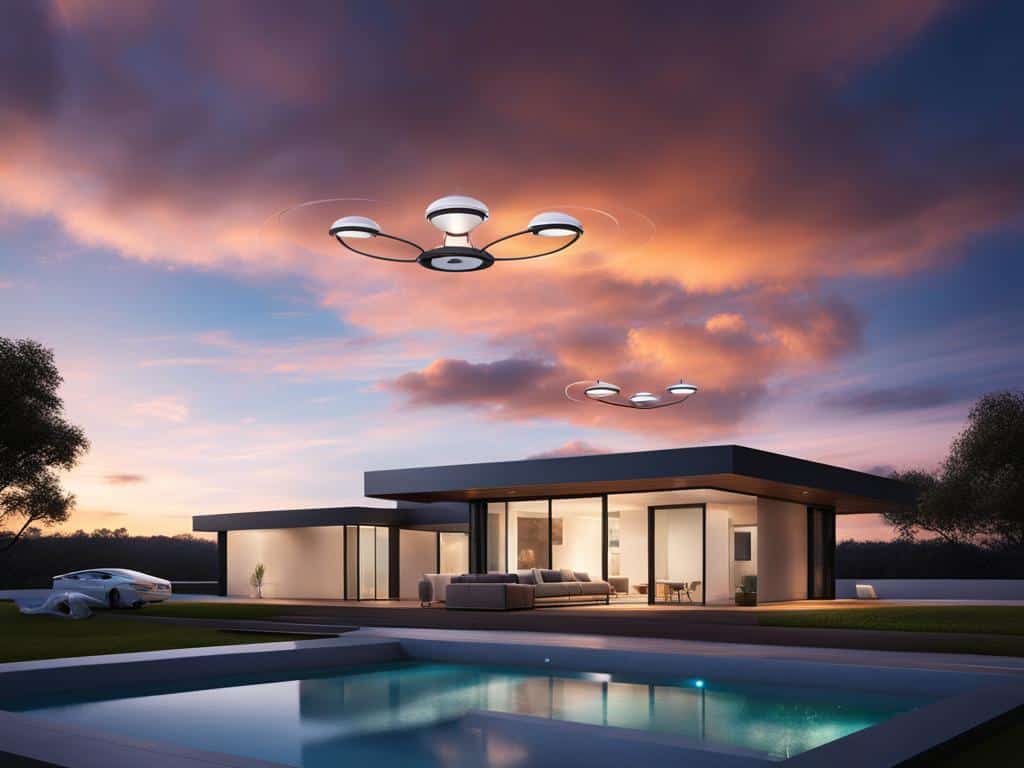 Through cloud computing, the possibilities for home automation are virtually endless. The ability to store and access data remotely, combined with the scalability and affordability offered by the cloud, opens up new opportunities for creating intelligent and interconnected homes. Embrace the power of cloud computing in home automation and transform your living space into a smart, efficient, and connected ecosystem.
Through cloud computing, the possibilities for home automation are virtually endless. The ability to store and access data remotely, combined with the scalability and affordability offered by the cloud, opens up new opportunities for creating intelligent and interconnected homes. Embrace the power of cloud computing in home automation and transform your living space into a smart, efficient, and connected ecosystem.
Pros and Cons of Home Automation
Like any technology, home automation has its pros and cons. Understanding the advantages and disadvantages can help you make an informed decision about implementing a home automation system in your home.Advantages of Home Automation
- Remote Access: With home automation, you can control and monitor your devices from anywhere, providing convenience and flexibility.
- Comfort: Home automation allows you to automate tasks and customize settings to create a comfortable environment tailored to your preferences.
- Energy Efficiency: By automating lighting, heating, and cooling systems, you can optimize energy usage and reduce utility bills.
- Convenience: Automating routine tasks, such as adjusting the thermostat or turning on/off lights, saves time and effort.
- Increased Safety: Home automation systems offer features like remote monitoring, motion detection, and alarm systems, enhancing the security of your home.
Disadvantages of Home Automation
- Cost of Devices: Home automation systems require an initial investment in devices, which can be expensive depending on the features and brands you choose.
- Security Concerns: As home automation relies on connectivity and online access, there is a potential risk of cybersecurity threats and privacy breaches.
- Compatibility between Different Systems: Not all home automation devices and systems are compatible with each other, requiring careful consideration and research to ensure seamless integration.
Common Features and Devices in Home Automation
Home automation systems offer a wide range of features and devices that enhance convenience, efficiency, and security in your smart home. By integrating these devices into your automation system, you can create a seamless and personalized living experience. Some common features and devices in home automation include:1. Fire and Carbon Monoxide Monitoring
Ensure the safety of your home and loved ones with automated fire and carbon monoxide monitoring. These devices detect smoke, heat, and dangerous gas levels, providing early warnings for potential hazards. They can trigger alarms, send alerts to your smartphone, and even contact emergency services.2. Remote Lighting Control
Take control of your lighting from anywhere in your home or even when you’re away. With remote lighting control, you can adjust the brightness, color, and schedule of your lights to create the perfect ambiance. Integration with voice assistants allows for seamless voice control and automation.
Philips Hue Smart Light Starter Kit | Control with App or Voice Assistant
- Includes one Hue bridge, one smart button, and three White Ambiance smart 75W-equivalent A19 warm-to-cool white light bulbs; Perfect for general lighting anywhere in your home
- Choose from shades of warm-to-cool white light to enhance your room décor and ambiance; cool white light to focus or energize, warm white light to relax.
- Convenient smart control; Set up voice control in the Hue app and use simple voice commands to control your lights with Alexa or Google Assistant
This post contains affiliate links.
3. Thermostat Control
Optimize energy usage and create a comfortable environment with thermostat control. Smart thermostats can learn your preferences, adjust temperatures based on occupancy, and even consider external factors like weather conditions. With remote access, you can monitor and adjust your thermostat settings from your smartphone.This post contains affiliate links.
4. Appliance Control
Transform your appliances into smart devices by integrating them into your home automation system. With appliance control, you can remotely turn on/off, schedule, or monitor the status of your appliances. This feature enhances energy efficiency and convenience, allowing you to manage your devices with ease.
GE Energy Management | Occupancy Sensing Wireless Thermostat
- Using a built-in occupancy sensor, differentiates between incidental and guest occupancy to completely eliminate unnecessary energy use
- Effortless installation
- Easy plug and play installation via quick connector
This post contains affiliate links.
5. Security Systems
Keep your home secure with automated security systems. These systems include features like door/window sensors, motion detectors, and surveillance cameras. Receive real-time notifications and access live video feeds from your smartphone, ensuring peace of mind and quick response to any security events.This post contains affiliate links.
6. Live Video Surveillance
Monitor your home visually with live video surveillance. Integrated into your home automation system, surveillance cameras provide real-time video streams that you can access remotely. Whether you’re at work, on vacation, or just in another room, you can keep an eye on your home and loved ones for added security.
Arlo Pro 4 Spotlight Camera | Wireless Security, 2K Video & HDR, Color Night Vision, 2 Way Audio
This post contains affiliate links.
7. Keyless Entry
Say goodbye to traditional keys and embrace keyless entry systems. These systems utilize smart locks that can be controlled through your automation system or mobile app. Unlock your doors with a touch, PIN code, or smartphone proximity, providing convenience and enhanced security for your home.
Level Lock+ Connect Wi-Fi Smart Lock Plus Apple Home Keys | Remotely Control locks from Anywhere
- Security meets style with this small, discreet smart lock available in various sophisticated finishes
- Seamlessly integrate Lock+ with your existing door hardware, with no visible technology on the inside or outside
- Forget your keys at home – on purpose. Access your home effortlessly by tapping Lock+ with your iPhone or Apple Watch, using the key stored in your Apple Wallet, just as you would when making a purchase
This post contains affiliate links.
| Device | Description |
|---|---|
| Smart Speakers | Voice-controlled devices that integrate with your home automation system, enabling voice commands and providing information and entertainment. |
| Smart Locks | Electronic locks that allow keyless entry and remote access control, enhancing security and convenience for your home. |
| Smart Thermostats | Intelligent thermostats that learn your preferences, adjust temperature settings, and offer energy-saving features, providing comfort and efficiency. |
| Smart Outlets | Wi-Fi enabled outlets that allow you to remotely control and automate the power supply to connected devices. |
Future Trends in Home Automation
The future of home automation holds exciting possibilities, with a range of emerging trends that are set to transform the way we live. 1. Increased Integration with Voice Assistants: Voice assistants, such as Amazon Alexa and Google Assistant, are becoming more commonplace in households. In the future, home automation systems will further integrate with these voice assistants, allowing you to control various devices and tasks through voice commands. 2. Artificial Intelligence-Powered Automation: Artificial intelligence (AI) is revolutionizing home automation. AI-powered systems can learn your preferences and habits, automatically adjusting settings and performing tasks to optimize your comfort and convenience. 3. Advanced Security Features: Security is a top priority for homeowners, and future home automation systems will offer advanced security features. These may include facial recognition technology, smart locks, and real-time monitoring, providing enhanced protection for your home. 4. Energy-Efficient Solutions: As sustainability becomes increasingly important, energy-efficient solutions are set to play a key role in home automation. Smart thermostats, solar power integration, and energy management systems will help homeowners reduce their carbon footprint and save on energy costs. 5. Interoperability between Different Home Automation Systems: Currently, the compatibility between different home automation systems can be a challenge. However, in the future, interoperability will improve, allowing different devices and technologies to seamlessly work together and create a unified smart home experience. As technology continues to advance, these trends will shape the future of home automation, making it more accessible, intelligent, and integrated than ever before.Future Trends in Home Automation
| Trend | Description |
|---|---|
| Increased Integration with Voice Assistants | Voice assistants will become more integrated with home automation systems, enabling control through voice commands. |
| Artificial Intelligence-Powered Automation | AI-powered systems will learn user preferences and automate tasks to optimize comfort and convenience. |
| Advanced Security Features | Future home automation systems will offer advanced security features like facial recognition and real-time monitoring. |
| Energy-Efficient Solutions | Sustainable practices will be incorporated into home automation, enabling energy savings and reduced carbon footprints. |
| Interoperability between Different Home Automation Systems | Improved compatibility between different systems will allow seamless integration and a unified smart home experience. |
Conclusion
Home automation simplifies the control and management of devices in your home, providing convenience, efficiency, and security. With the ability to remotely access and automate various tasks, home automation enhances your living experience and offers numerous benefits. By integrating smart technology into your home, you can effortlessly control lighting, temperature, security systems, and more with just a few taps on your smartphone or through voice commands. As technology continues to evolve, the future of home automation looks promising. Exciting trends and advancements are on the horizon, including increased integration with voice assistants like Alexa and Google Assistant, as well as the development of artificial intelligence-powered automation. These advancements will further streamline daily tasks, making your home even more intelligent and responsive to your needs. Embrace the possibilities of smart living and transform your home into a more connected and automated space. With home automation, you can create personalized schedules, monitor energy usage, and enhance your home’s security, all from the palm of your hand. Say goodbye to the hassles of manually adjusting devices and embrace the convenience and comfort that home automation brings. Discover the endless possibilities and make your home a true smart home.FAQ
What is home automation?
Home automation is the automatic control of electronic devices in your home through online connectivity. It allows devices to be controlled remotely, either through a mobile app or a voice assistant, providing convenience, efficiency, and security.
What are the benefits of home automation?
Home automation offers numerous benefits to homeowners, including remote access, comfort, energy efficiency, convenience, and increased safety. It allows you to schedule tasks for your devices, monitor them remotely, and even have them trigger each other to create a seamless smart home experience.
How does home automation work?
Home automation works through a network of devices connected to the internet. Sensors monitor changes in motion, temperature, and light, while controllers send and receive messages to control the devices. Actuators physically change the device’s state based on the commands received. This network allows for remote control and automation of various tasks in your home.
What is the Internet of Things (IoT) and how does it relate to home automation?
The Internet of Things (IoT) refers to devices that are connected to the internet and can communicate with each other. Home automation is a subset of IoT, where devices in your home are connected and automated. Devices like smart light bulbs, thermostats, and security cameras are examples of IoT devices that can be integrated into a home automation system.
What are the components of a home automation system?
A home automation system consists of several components, including sensors, controllers, and actuators. These devices work together to monitor and control various aspects of your home, such as lighting, temperature, security, and appliances.
What are the common control protocols in home automation?
Common control protocols in home automation include WiFi, Z-Wave, ZigBee, and Bluetooth. These protocols allow home automation devices to connect to the internet and communicate with each other, enabling seamless control and automation.
How does cloud computing relate to home automation?
Cloud computing plays a significant role in home automation systems. It allows users to access their devices and control their homes remotely through the cloud. Cloud servers store data and enable remote access, enhancing the overall functionality and convenience of the system.
What are the pros and cons of home automation?
Home automation has several advantages such as remote access, comfort, energy efficiency, convenience, and increased safety. However, it also has potential drawbacks, including the cost of devices, security concerns, and compatibility issues between different systems. It’s important to weigh the benefits and considerations before implementing a home automation system.
What are the common features and devices in home automation?
Common features in home automation include fire and carbon monoxide monitoring, remote lighting control, thermostat control, appliance control, security systems, live video surveillance, and keyless entry. Devices like smart speakers, smart locks, smart thermostats, and smart outlets can be integrated into a home automation system to enhance functionality and convenience.
What are the future trends in home automation?
The future of home automation is promising, with trends such as increased integration with voice assistants, artificial intelligence-powered automation, advanced security features, energy-efficient solutions, and interoperability between different home automation systems.
